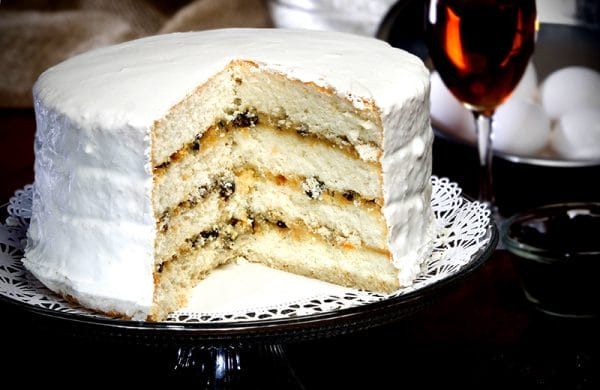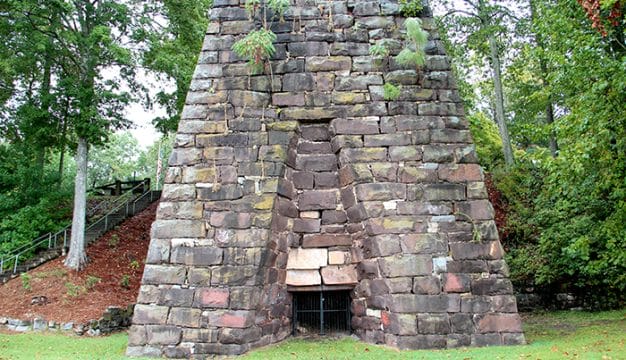Lane Cake
 Lane Cake
The Lane cake, one of Alabama’s more famous culinary specialties, was created by Emma Rylander Lane of Clayton, Barbour County. It is a type of white sponge cake made with egg whites and consists of four layers that are filled with a mixture of the egg yolks, butter, sugar, raisins, and whiskey. The cake is frosted with a boiled, fluffy white confection of water, sugar, and whipped egg whites. The cake is typically served in the South at birthdays, wedding anniversaries, and other special occasions. The recipe was first printed in Lane’s cookbook Some Good Things to Eat, which she self-published in 1898.
Lane Cake
The Lane cake, one of Alabama’s more famous culinary specialties, was created by Emma Rylander Lane of Clayton, Barbour County. It is a type of white sponge cake made with egg whites and consists of four layers that are filled with a mixture of the egg yolks, butter, sugar, raisins, and whiskey. The cake is frosted with a boiled, fluffy white confection of water, sugar, and whipped egg whites. The cake is typically served in the South at birthdays, wedding anniversaries, and other special occasions. The recipe was first printed in Lane’s cookbook Some Good Things to Eat, which she self-published in 1898.
According to chef and culinary scholar Neil Ravenna, Lane first brought her cake recipe to public attention at a county fair in Columbus, Georgia, when she entered her cake in a baking competition there and took first prize. She originally named the cake the Prize cake, but an acquaintance convinced her to lend her own name to the dessert.
The Recipe
Lane’s recipe states that the cake should be baked in medium pie tins lined on the bottom with ungreased brown paper, rather than in cake pans. She specified “one wine-glass of good whiskey or brandy” for the filling and that the raisins be “seeded and finely clipped.” She also insisted that the icing be tested with a clean spoon. In Lane’s time, the cake would have been baked in a wood stove. Lane also suggested that the cake is best if made a day or so in advance of serving, presumably to allow the flavors to meld. Lane used the cake recipe as the basis for other cakes in her book, some frosted with orange or lemon cream.
The Lane cake has been subjected to countless modifications and twists over the years. Coconut, dried fruit, and nuts are common additions to the filling described in the original recipe. Home bakers who wish to avoid the whiskey or brandy in the original recipe have substituted grape juice, especially for children’s birthdays. Another common variation is to ice the entire cake with the filling mixture. The Lane cake is often confused with the Lady Baltimore cake, another fruit-filled, liquor-laced dessert with a different pedigree.
In Alabama, and throughout the South, the presentation of an elegant, scratch-made, laborious Lane cake is a sign that a noteworthy life event is about to be celebrated. In the novel To Kill a Mockingbird, by Alabama native Harper Lee, character Maudie Atkinson bakes a Lane cake to welcome Aunt Alexandra when she comes to live with the Finch family. Noting the cake’s alcoholic kick, the character Scout remarks, “Miss Maudie baked a Lane cake so loaded with shinny it made me tight.” Shinny is a slang term for liquor.
Additional Resources
Egerton, John. Southern Food: At Home, on the Road, in History. New York: Alfred A. Knopf, 1987.
Lane, Emma Rylander. Some Good Things to Eat. 1989. Reprint, Clayton, Ala.: The Clayton Record, 1976.
McDermott, Nancie. Southern Cakes. San Francisco: Chronicle Books, 2007.
Tapper, Monica. A Culinary Tour Through Alabama History. Charleston, S.C.: The History Press, 2021.



